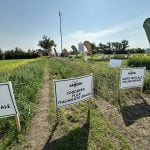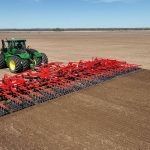
Tag Archives soil moisture

Farmers weigh strategies to boost soils’ water-holding capacity
At Ag in Motion, experts discuss soil texture, organic matter and amendments

Kuhn introduces the 5640 field cultivator
Wider 56- and 60-foot working widths introduced

Taking the mystery out of soil and tissue tests
Agronomists and soil scientists describe the differences between various tests

The role of enhanced efficiency fertilizers in nitrogen fertilization
Crop Nutrition: Maximum crop production cannot be achieved with fertilizers and amendments alone

Retain your rain
Farmers can get creative to manage water efficiency on Prairie fields

Lemken Solitair DT blends tillage and seeding
Combination unit wins Environmental Sustainability Award

Research confirms value of taller crop stubble
Technology is available to help set up, measure and monitor on-farm research projects

Digging into the cause of poor yields
Did drought, fertility issues or something else lead to that poor crop? We look at the possibilities

On-farm weather stations help guide management decisions
The return on investment can come from improved efficiency, helping growers get the most out of a crop under variable growing conditions

Stubble height can make yield difference
Under extremely dry growing conditions, do your best to manage the moisture that’s there


